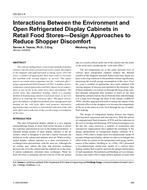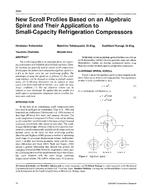Click here to purchase
Over the last decade, the global fight against climate change through electrification has led to an increase in research on building heating, ventilation, and air conditioning (HVAC) systems that utilize intelligent control algorithms to provide demand-side grid service while maintaining the thermal comfort of building occupants. As the pivotal point between building electricity consumption and indoor thermal comfort, high-efficiency electrical heat pumps are at the center of these emerging studies, and various grid-interactive and occupant-comfort control algorithms have been developed for them. The impact of these algorithms on the heat pump operation and performance under different weather, building load, and grid requests calls for investigation and verification via experimental tests with actual heat pumps integrated with real-time building and grid responses. This study presents a Water-Source Heat Pump Hardware-in-The-Loop (HIL) Test Facility developed with the capability to perform such tests. The hardware configuration for this test facility introduces a hydronic system that emulates the conditions for the heat pump water-side, and a duct system that emulates conditions for the heat pump airside. Both data acquisition and emulator control are implemented through the National Instruments (NI) LabVIEW software running on an NI PXI platform. The HIL mechanism based on the hardware-software integration that allows the testbed to communicate with a generic simulation environment is also discussed. Currently, the test facility setup includes a single heat pump and virtual building model in EnergyPlus coupled with an occupant behavioral model in MATLAB. Preliminary test results of the current setup demonstrate the building load emulator’s ability to track the simulated zone temperature with a Root Mean Square Deviation (RSME) below 0.12C (0.216F). An uncertainty analysis based on sensor accuracies shows that the heat pump coefficient of performance (COP) can be measured with a relative uncertainty of 10.4% in cooling and 3.7% in heating. Apart from the current testing on a single heat pump, the test facility also provides the flexibility to include additional heat pumps to form a heat pump cluster, as well as coupling the heat pump with active thermal storage to provide enhanced demand flexibility.
Product Details
- Published:
- 2022
- Units of Measure:
- Dual
- File Size:
- 1 file , 1.9 MB
- Product Code(s):
- D-TO-22-C028
- Note:
- This product is unavailable in Russia, Belarus


